146 posts
Latest Posts by badkittos-spellandfolklore - Page 5
I really liked the post about your last hiking but there's something that bothers me. I know you never meant that in that way but the amulet you have...You know it is strictly connected to neonazism nowadays right? You can spot this symbol at every far-right march so doesn't it make you feel uneasy? What's your opinion about using pagan symbols that mean something completely different now from what it was supposed to be in the past? I just want to warn you and to know what you think. Love, anon
you cannot ask a Polish Rodnover whether she knows who uses this symbol and warn me. of course I do. I’ve fought for this symbol.
I got beaten up for wearing it with my rainbow shirt.
nazis see it and approach me, overjoyed, and I shake my head, and laugh. I will get my teeth kicked in for it, surely, but I do not care.
I will never allow the nazi scum to take it from me - it’s my heritage, my right, a symbol of my ancestors.
I will not idly allow them to take it and taint it and shit on it - for me it is sacred and always close to my heart. I want the world to see it and think “slavic” and “ancient” and “little sun” and “LOVE” and not “nazis”.
if we allow them to use our symbols and give them sole rights to them - same with norse, celtic - then they will take them and twist them and ruin them, taint them with hatred. as long as there are people like me - for whom the old faith is about love and equality, and nature, and our bond to things we cannot fully comprehend - we will keep fighting. this symbol belongs to me through my blood, my land, my research, my devotion, my love. it does not belong to them - hatred is no claim at all.
this symbol does not mean something else now - but soon it might. people ask me sometimes “is this, you know… a swastika..? are you… you know?” and I bend over backwards to explain that no, I am not, and yes I am aware, but listen - we have to fight for our symbols. we have to fight the scum. take what they hold dear and fill it with love, glaze it with it so thickly they will refuse to touch it.
I used to be scared of Kolovrat, I used to be scared of our old swastikas. caution is necessary - fear is not. I wear it precisely for this reason - so people keep asking, I keep telling them the truth, so nazis keep getting mad, and so more and more wonderful people keep wearing the kolovrat with love and tolerance and hope in their hearts.
these are our old symbols, and we simply cannot let them be tainted and stolen from us. it is a difficult road, and it does make me feel uneasy, but it is necessary.
I do it for those that were before me, for those that share my path in this life, and for all those that will come after me - and look at their old symbols in search for meaning, belonging, family.

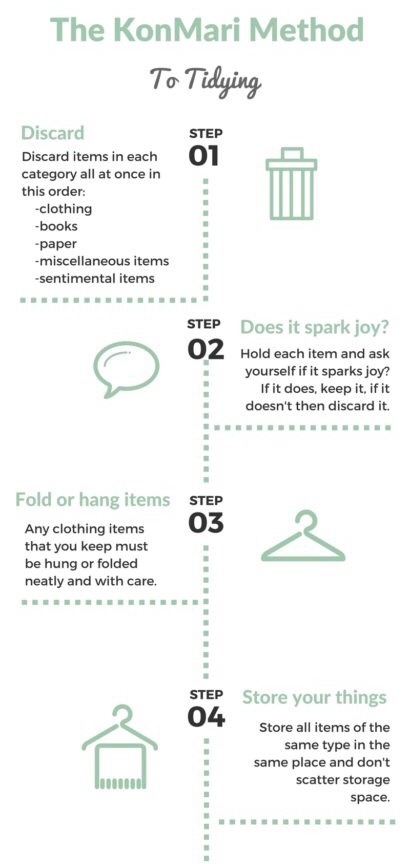


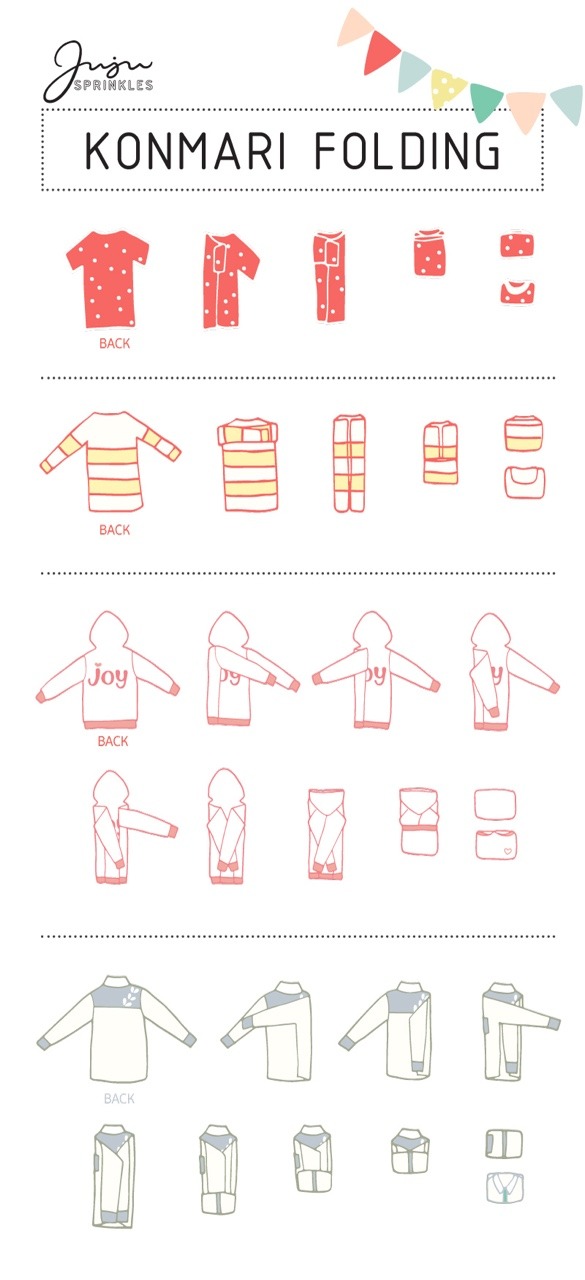



Hace unos dias vi una serie de gifs de Marie Kondo explicando que a la hora de ordenar nuestra ropa debemos elegir la que nos produce felicidad, y para no sentirnos mal por la ropa que queremos botar, agradecer el tiempo que estuvo esa prenda estuvo con nosotros y dejarla ir..
Esto me llamo la atención y luego en Netflix descubri que habia una serie de ella, donde va a casas de personas y las ayuda a organizar. Me gusto su método y quise compartir algunos de sus consejos con ustedes. Quien sabe. Siempre se aprende algo 😉

Some users translated my words, because in the comments were asking for it, so here I shared one that I considered the most exactly. Thank you so much everybody! 🤗and specially @streptomycinn. If you wanna see more post about Marie Kondo and her Konmari method of tidying up please check my tumblr 😉🌷👩🏻💼
“A few days ago, I saw a series of gifs of Marie Kondo explaining that, when we’re organizing our clothes, we should choose those that spark joy, and in order to not feel bad about the clothes we have to throw away, we should thank the clothes for the time that they were with us and then let them go.
This caught my attention, and I found on Netflix that she had her own series, where she goes to people’s houses and helps them to organize. I like her method and I want to share some of her advice with you. Who knows. You can always learn something 😉
Irish people; The faeries aren’t real
Irish people; No fucking way will I go in that faerie ring

Slavic symbolism of bread, and harvest rituals - from Polish perspective
♥



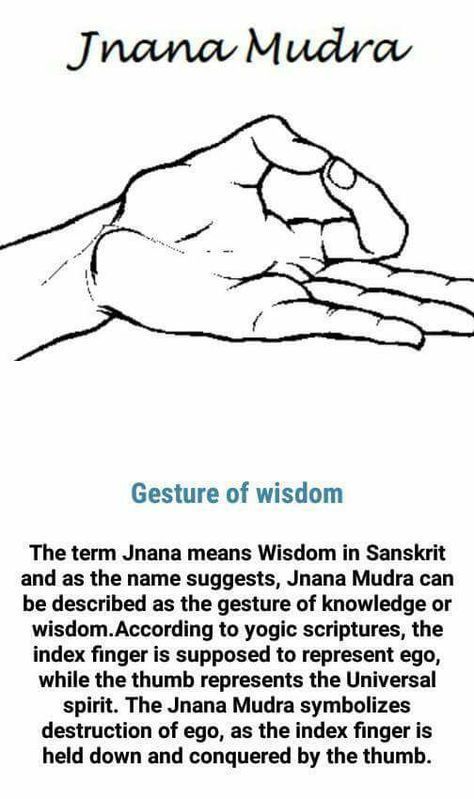

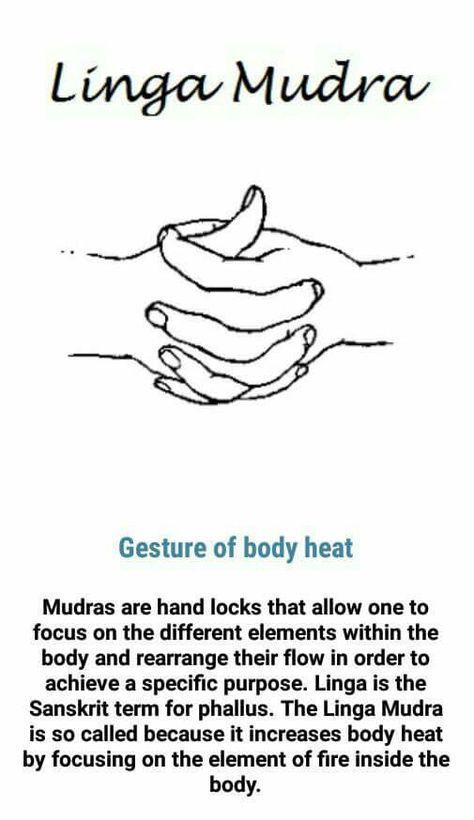




What is a Mudra?
To put it simply, a Mudra is a hand gesture that guides the energy flow to specific areas of the brain. There are many types of Mudras designed to bring different benefits, depending on what we specifically need. They are done in conjunction with breathing to increase the flow of Prana in the body. By practicing it, a connection is developed with the patterns in the brain that influences the unconscious reflexes in the different areas. The internal energy is, in turn, balanced and redirected, creating an impact on the sensory organs, tendons and glands veins.
Scotland is not boring
Not so friendly reminder Satan is anti map
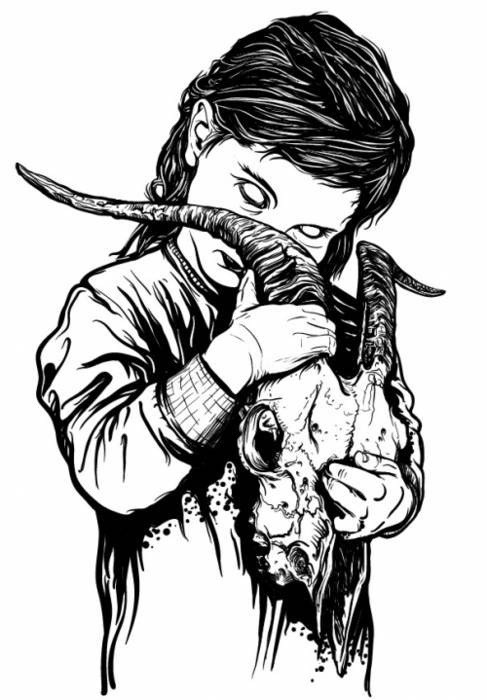
If then you do not make yourself equal to God, you cannot apprehend God; for like is known by like.
Leap clear of all that is corporeal, and make yourself grown to a like expanse with that greatness which is beyond all measure; rise above all time and become eternal; then you will apprehend God. Think that for you too nothing is impossible; deem that you too are immortal, and that you are able to grasp all things in your thought, to know every craft and science; find your home in the haunts of every living creature; make yourself higher than all heights and lower than all depths; bring together in yourself all opposites of quality, heat and cold, dryness and fluidity; think that you are everywhere at once, on land, at sea, in heaven; think that you are not yet begotten, that you are in the womb, that you are young, that you are old, that you have died, that you are in the world beyond the grave; grasp in your thought all of this at once, all times and places, all substances and qualities and magnitudes together; then you can apprehend God.
But if you shut up your soul in your body, and abase yourself, and say “I know nothing, I can do nothing; I am afraid of earth and sea, I cannot mount to heaven; I know not what I was, nor what I shall be,” then what have you to do with God?
Hermes Trismegistus;- „Hermetica :The greek corpus Hermeticum and the latin Asclepius“
You can add pockets.
You can add pockets to anything with a side seam.
They can be big pockets.
Anything we want can have big pockets.
We have unlimited power. Over the side seam pockets.

There’s two steps: drafting the pattern and sewing the pattern. The pattern drafting is really quite easy:

I’m having trouble getting google drive to give me my pictures, so I traced over the foundation lines.
The first thing to make is the pocket template.
Draw a 10″ vertical line on your drafting paper.
Measure 1″ down from the top of the line, and draw a notch. This is notch #1.
Measure 6″ from the top of the paper, and mark it “x”
Measure 1″ down from X (7″ from top) and make a little mark to come back to later.
Measure 3″ down from that mark (4″ from x, 10″ from top) and you should be at the end of your line.
You have now drawn your vertical foundation line.
Draw a 3.5″ long horizontal line at the very top of the vertical line
Draw a 5″ long horizontal line that comes off the point you marked X.
Draw a 5″ long horizontal line that comes off the very bottom of the vertical line.
You should now have all the photoshopped in lines in my image, your foundation lines, on your paper.
You sort of eyeball in the curved lines. Starting at the mark you made to come back to later (7″ from the top of the line), draw in your pocket bottom. It’s just a little swoop that eventually touches the bottom foundation line. You also need to draw in the curve at the top of the pocket, to connect it to the middle horizontal line.
The good news is that if your foundation lines are right, you can go pretty nuts with eyeballing in the curves and still be in the right place. If the drafting was tough and you’re more a go with the flow kind of patterner, just look at my pattern and guess how you’ll want yours.
Make sure that you can see your notches at 1″ and 6″ from the top. You’ll need them.
Now you have your pocket template, and you need to turn it into three pattern pieces.

The first pattern piece is for the pocket front, and it’s very easy. Take your template, trace it onto a new piece of paper, and add 1/2″ of seam allowance on all sides. Make sure you transfer your notches.

(Sorry for that +/- thing there. I’m having trouble with google drive and I’m way too lazy to try to troubleshoot it when I could just take sloppy screenshots)
For the pocket back, trace your template onto a new piece of paper. Measure a vertical line in 1″ from your vertical foundation line. Erase the part to the left of that line, leaving you with a sort of slimmed down version of your front pocket piece. Add seam allowance all the way around.

Now you’re going to do the same thing you did with the pocket front, but keeping the smaller part. This is the pocket back.
So, trace your pocket template again, draw a line in 1″ from the vertical line, and then erase everything that’s to the right of the line. Then, add seam allowance along all the sides except the notched one. I drew over it in green hilighter so that you can tell which one. This is the skirt side seam extension.

Pattern drafting is done.
So, what’s with the funky flap? Effectively, what we have right now is a pocket front that’s made of one piece of fabric, and the same shape for the back that’s made of two different pieces of fabric. You’re going to add the skirt side seam extension to your skirt, and then sew the pocket back to this. This is going to hide your pocket opening.

This is going to make your pocket much less visible. This is important, because you will likely be making your pocket out of a different fabric than your finished skirt. If you made your skirt out of something expensive, especially custom-printed, it’d be a massive waste of money to use that fabric inside the pocket, where no one can see it. If you’re using a looser-woven fabric, like I did for this skirt, you need to make your pocket in something much tighter, smoother, and less likely to form holes. Quilt cotton is great for this sort of thing because it’s tightly woven and smooth.

Take the pattern for the back of your skirt, and tape the pattern for the side seam extension at the top of the side seam.
If you’re like me, and don’t use a pattern for your skirt, pin the extension on the side seam and then trim the side seam down everywhere else (just cut around the extension piece). For 99% of lolita skirts where you don’t use a pattern, losing 1″ on each side seam isn’t going to affect the overall poof.
Side note, I did this on a pleated skirt and pleated the fabric first. In a normal situation, you would do this with the fabric flat, and gather the waistband after the pockets are assembled.

Cut your pockets out of your pocket material. Yes, I was a terrible person and did one on the lengthwise grain and one on the crosswise grain. It’ll be fine.
Make sure that your notches are visible on both pocket pieces.

Now, line the top of your pocket front up with the top of your skirt, and sew your pocket along the horizontal seam. (if your pocket has a RS or WS, sew the pocket to the skirt front with right sides together). If you’re feeling like getting a gold star, press, grade, and understitch the seam.
Line the top of your pocket back up with the top of your skirt extension, and sew the pocket back to the skirt seam extension. Gold star for pressing, grading the seam allowance, and understitching the seam.
So, with two gold stars in hand, put the front and backs of the skirts together, right sides together, with the pockets sticking out.
Remember your bottom notch at the 6″ mark? Stick a pin there. You’re now going to sew from that pin all the way to the bottom of the skirt.
This might feel wrong at first, because it feels like you’re sewing the bottom inch or so of your pocket all the way closed. This a normal feeling, and you’re experiencing it because I just told you to sew part of your pocket all the way shut. The opening for your hand has to be shorter that the total length of the pocket, or else you won’t be able to put stuff in it without it falling out.

This will be roughly where the thicker pink line is.
Once you’ve sewn your side seam (leaving the pocket open, obviously), then you’re going to want to sew the pocket bag together. This is the purple line in my photo up there.
You might notice that my pocket sewing is a lot shorter than the pocket fabric. I sewed my pocket back piece on incorrectly and had to shorten the pocket or else it’d make a hole. Pockets are cool like that. If they’re a little off, no one but you will ever know.
I then did some extra reinforcing (did an extra seam around the outside of my stitching, and did a bit of extra machine tacking at the bottom of the pocket opening to make sure there weren’t rips developing in the future with wear.
So, then you can flip the skirt right side out and appreciate how nice your pocket is. There’s just one more thing:
When you put the waistband in, you’re going to need to take the top of the pocket bag (that little 3.5″ bit at the very top) and sew that into your waistband. As you sew your waistband, this will actually be pretty obvious that it needs to be done, because the waistband intersects with the pocket top. If this was a normal skirt, I’d say to do it now.
However, since this is lolita, you’re probably going to need to gather or pleat your skirt, and THEN sew the pocket top down. It’s just one more step: pull your gathers, get them to look pretty, and then run a line of basting to hold the pocket nice and neat along the top line. You don’t want to get the top of the pocket caught up in pleats or gathers, or you’ll have weird wrinkles in your pockets that hold lots of crumbs and feel gritty. Obviously this is the picture that I can’t get google docs to let me see, so if that’s confusing, bug me about it tomorrow and I’ll get that good picture up.

Here, you can see my pins holding the pocket top flat, and you might be able to see my line of basting that holds it in place. Once that basting is there, you can attach your waistband just like normal, and then you’ll have a pocket big enough to hold your smartphone and also some gum.
One last note: if you put really heavy things in your new pocket, make sure your petticoat can support the weight. There’s nothing that says that you can’t build a lolita skirt with pockets, but the laws of physics sometimes say what you can and can’t put in them without wrecking your poof.
Anyway, there we go, the MOST requested lolita tutorial I’ve ever gotten. My brain’s feeling a bit fuzzy and I’m sure I said something weird or that doesn’t make sense, but my askbox is open and I read every comment someone puts on a reblog, so feel free to tell me to clarify.

From Die Muskete, 1912.
My favorite (and weirdest) equine images are collected in my horse gallery.
Shiver in wonderment: Weblog ◆ Books ◆ Videos ◆ Music ◆ Etsy
Veles
The woods whisper.
The ancient tress, bent and scraggly, reach down to hush snicker, tricking and advising you, as you breathe in this stale, moist air, of this twilight place, neither here nor there. Here you are to be tested, to be changed, to become something new- or something old, if you wish so.
So you wander, through deep grass and clingy mud, through paths of mushrooms and bushes, ever shifting and deceptive. It is challenge, certainly, but one suited for you, one that will push you to your utmost limits, and make you grow beyond them.And so you walk forward, following shadows of wails, echoes of rain slithering over rocks, the eternal traces of things that haven’t walked Earth in long, long time (but will one day do so again).
He awaits you below, in cave whose entrance is secret yet can be found anywhere, carved out of soft mud and ancient dust and great stone. Water and earth meet, meld and meddle in each other’s business. Everything there is buoyant, verdant and vibrant, full of potential, of energy and life that seems as strong as hundred springs. Your ancestors crawl there, as they await for chance to fly back to life. You are filled with need, with hunger to learn and ask, to challenge them and test yourself, to learn secrets of this place, even as your eyes seems to melt, trying to pierce through shadows.
Men tried to describe him in many ways, and they all got something correct, and they all got so much that isn’t right. For how can any word, any shape properly contain him? You cannot guess whether he is constantly changing, or contains all forms of world, or whether he is something else, something unseen before (or at least in long, long time- he never got used to one shape, least of all human, for he is caretaker and guise of all creatures, patron of all things wild and free). You catch glimpses, just hints of truth, like looking for gold in murky waters, like going through earliest, foggiest memories- here pair of antlers, there hooves, over there strength and width of bear, dignity and bearing of ancient tree right there.
You see his eyes. You see power in there, reaching farther then roots of mountains, as malleable and stubborn as water, as wide as underworld itself, caring as soil, as destructive as earthquake, as consuming as flood, as deafening as silence, as freeing as your favourite song. You see ages you can’t grasp beyond, time as heavy as illness upon you, and glint of satisfied mischief. You see wisdom there, earned and practical, born from curiosity towards specific purpose (and being what he is, there are so so many things he knows). It is gaze you know, from your brother when he talks about his work, from your father and grandparents and teacher when you were young, from mirror too, from all people who know something you don’t and are happy to learn ( all but one, though she is a thing of still darkness and deep waters, for her eyes are always veiled, and she hoards secrets even lord of dead and mystery doesn’t know, greedily keeps them for no other reason but their own sake), sharp and purring, inviting, never satisfied, always watching and waiting.
A cloak unrolls from top of his horns to below his paws-feet-hooves. It is a meadow and mountain, forest and field, swamp and moss. He seems to wear whole of world on his shoulders, all things civilized and wild and in-between, and below it he hides soil and clay, stone and caves, and all things that crawl and slither and claw and slip upon and below. It grows and withers, rises and fall, living and dying, always changing, because nothing ever stops, because nothing remains the same, because nothing escapes his eye.
There is stick in his hand. A rough, wooden staff, scrappy and twisted, warped and bent, like branch left in tiny river for too long. It is an old man’s staff, to help him climb up the mountain, and fighter’s pole, in hands of skilled deadlier then a sword or spear, and shepherd’s stick by which he defends and leads livestock, and sorcerer’s focus, by which he bends world to his will. It is all those things and so much more, greater then any scepter, and it is part of him, for he is master of liminal spaces and times, lord of wolf and cattle, who guides and directs, tests and teaches living and dead.
‘‘Come.’‘ He says, doesn’t order, even if he has every right,because he doesn’t need to, because you chose this, again and again, and you come into his embrace, in arms that are paws and claws and fur and leather, as calming as river that flows beneath ground, as comforting as shade of tree in summer field, and you smile, smile, for there is no monster and no nightmare that can stand against what you devoted yourself to, against He who accepted you.

Makpal Abdrazakova
27-year-old berkutchi (she hunts with a trained eagle) from central Kazhakstan
Story here


Costume. Chitons.










Ukraine Folk Embroidery
Celebrating Spitzer, One of NASA’s Great Observatories
As the Spitzer Space Telescope’s 16-year mission ends, we’re celebrating the legacy of our infrared explorer. It was one of four Great Observatories – powerful telescopes also including Hubble, Chandra and Compton – designed to observe the cosmos in different parts of the electromagnetic spectrum.
Light our eyes can see
The part of the spectrum we can see is called, predictably, visible light. But that’s just a small segment of all the wavelengths of the spectrum. The Hubble Space Telescope observes primarily in the visible spectrum. Our Chandra X-ray Observatory is designed to detect (you guessed it) X-ray emissions from very hot regions of the universe, like exploded stars and matter around black holes. Our Compton Gamma Ray Observatory, retired in 2000, produced the first all-sky survey in gamma rays, the most energetic and penetrating form of light.

Then there’s infrared…
Infrared radiation, or infrared light, is another type of energy that we can’t see but can feel as heat. All objects in the universe emit some level of infrared radiation, whether they’re hot or cold. Spitzer used its infrared instrument to make discoveries in our solar system (including Saturn’s largest ring) all the way to the edge of the universe. From stars being born to planets beyond our solar system (like the seven Earth-size exoplanets around the star TRAPPIST-1), Spitzer’s science discoveries will continue to inspire the world for years to come.

Multiple wavelengths
Together, the work of the Great Observatories gave us a more complete view and understanding of our universe.

Hubble and Chandra will continue exploring our universe, and next year they’ll be joined by an even more powerful observatory … the James Webb Space Telescope!

Many of Spitzer’s breakthroughs will be studied more precisely with the Webb Space Telescope. Like Spitzer, Webb is specialized for infrared light. But with its giant gold-coated beryllium mirror and nine new technologies, Webb is about 1,000 times more powerful. The forthcoming telescope will be able to push Spitzer’s science findings to new frontiers, from identifying chemicals in exoplanet atmospheres to locating some of the first galaxies to form after the Big Bang.
We can’t wait for another explorer to join our space telescope superteam!
Make sure to follow us on Tumblr for your regular dose of space: http://nasa.tumblr.com
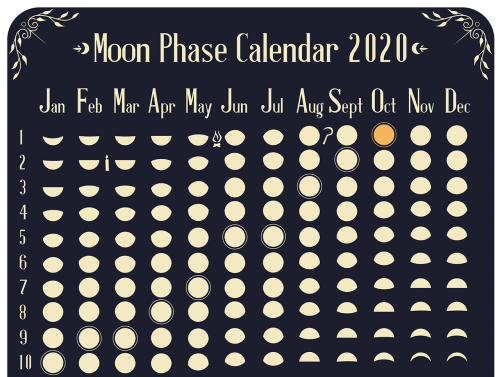
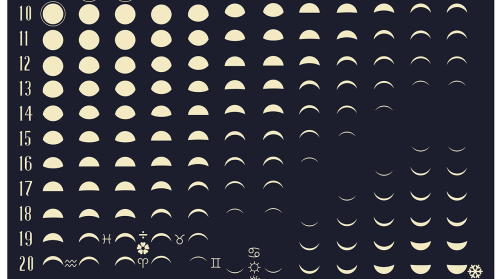
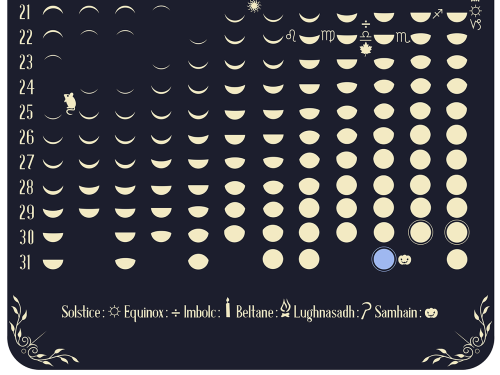
So I was out in my Local New Age Bookstore the other day and they had these neat moon phase calendars, but none had the holidays or zodiac at a glance so I decided to make one. This is ostensibly for myself, but feel free to use it for personal use!


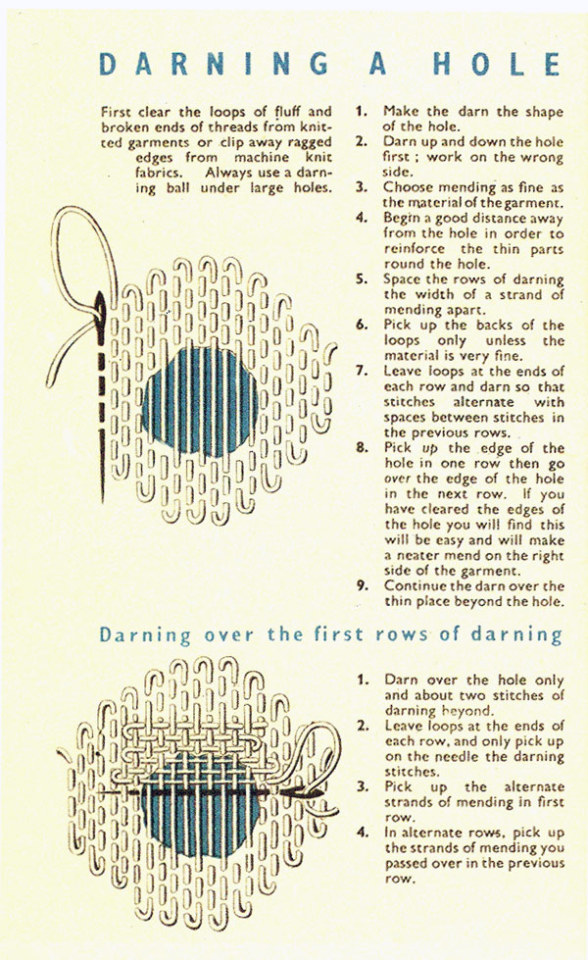
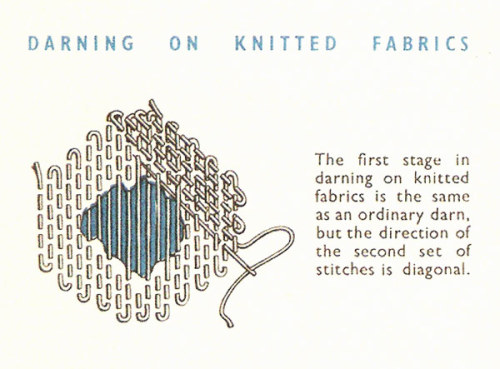
Make Do and Mend: Darning
OMG DIAGONAL!!!
To keep it S–T–R–E–T–C–H–Y–!
Why hasn’t anyone told me this?
Polish Classics Aesthetics
Pan Tadeusz: summer days, the wind in the garden, fields of wheat, flower crowns, mysterious pasts, young love, hunting trips, white dresses, family secrets
Lalka: rainy days, old architecture, antique shops, one-sided love, academia, porcelain dolls, hopeless romanticism
Sklepy Cynamonowe: city streets at night, daydream illusions, teather curtains, old memories, the snow in the light of a street lamp, clock going backwards, suspicious stores, footprints leading nowhere
Dziady: dark academia, pagan rituals, old churches, ghosts of past lovers, magic, anger at god, starry nights
Wesele: dancing, long talks about politics, sacred items, being without control of ones body and mind, alcohol, fields at night, family issues, hoplessness, traditional clothing, drunken singing, prophesies, phantoms, historical figures
Kamienie Na Szaniec: crumbling buildings, secret meetings, guns and ammunition, bloody hands, dark tunnels, the sound of bombs, faith, spies
Kordian: witches and devils, mountains at night, tragic love, travelling across Europe, betrayal, self-discovery, patriotism, long monologues, conspiracy, mental hospitals, city squares, royal palaces, the shining of a blade, uncertainty, the sound of a running horse

The Ancient Solfeggio Frequencies and their Effect on Water Crystals.
These original Sound Frequencies were apparently used in Ancient Gregorian Chants, such as the great hymn to St. John the Baptist, along with others that church authorities say were lost centuries ago. The Chants and their special tones were believed to impart tremendous Spiritual Blessings when sung in Harmony during Religious Masses. These powerful Frequencies were rediscovered by Dr. Joseph Puleo as described in the book “Healing Codes for the Biological Apocalypse” by Dr. Leonard Horowitz.
The Six Solfeggio Frequencies include: UT (396 Hz) - Liberating Guilt and Fear RE (417 Hz) - Undoing Situations and Facilitating Change MI (528 Hz) - Transformation and Miracles (DNA Repair) FA (639 Hz) - Connecting/Relationships SOL (741 Hz) - Awakening Intuition LA (852 Hz) - Returning to Spiritual Order
For example, the third note, frequency 528, relates to the note MI on the scale and derives from the phrase “MI-ra gestorum” in Latin meaning “miracle.” Stunningly, this is the exact frequency used by genetic biochemists to repair broken DNA, the genetic blueprint upon which life is based.
Skipped straight from Maiden to Crone like nobody’s business

zamówiłam niedawno bestiariusz słowiański - będzie w poniedziałek - i teraz czekam na okazję, by kupić sobie gieysztora. cieszę się bardzo z tego powodu i tak tylko chciałam się pochwalić hah. a tak przy okazji, uwielbiam Cię, żmijko.
o, bestiariusz jest bardzo przyjemny, szczególnie na wczesnojesienne wieczory - a Gieysztor, jak wszyscy mam nadzieję wiemy, jest bardzo bardzo istotną opoką dla wszelkich rozmyślań poszukiwań i analiz okołosłowiańskich. świetny wybór.
miłego czytania - i dziękuję Ci bardzo bardzo za taką miłą wiadomość!
życzę miłej i ekscytującej sobotniej nocy (jak zawsze) nieznajoma!
Add Some Oomph to Your Spells with Magical Timing
Like herbs, oils, and crystals, you don’t need to work with magical timing for your spell to be successful. You can cast a spell at any time, no matter your intention, and get your desired results. However, working with the energy of the sun, moon, and days of the week can add an extra power boost to your magic.
Think of it this way: certain energies are dominant at certain times. Those energies are easier to connect with because they are closer at hand, so to speak, so you can bring them into your life and your spells more easily and in a more powerful way. That doesn’t mean you can’t call on other energies during these times — it just means that you may not connect to them quite so easily.
If you choose to work with magical timing in your spells, there are several yearly, monthly, weekly, and even daily cycles you can align your spells with.

The Cycle of the Sun: Solstices and Equinoxes
These are the turning points that mark the solar year, and are associated with the relationships between day and night, light and dark, summer and winter. Each solstice or equinox marks the end of one season and the beginning for the next. Because they are so rare and so potent, these days are a great time for your “big picture” spells or for spells that need a big power boost.
Winter Solstice. The winter solstice marks the shortest day and longest night of the year, and falls between December 20 and December 23, depending on the year. In some pagan traditions the winter solstice, or Yule, marks the beginning of the new year — you may choose to set intentions for the coming year on this solstice. After the winter solstice, the nights start getting shorter and the days start getting longer — so spells related to healing and bringing things into the light are especially effective at this time of year. The winter solstice marks the end of the “dark half” of the year and beginning of the “light half” of the year; at this point, our focus turns from inward reflection to outward manifestation. You may choose to think of the time between the winter solstice and spring equinox as a “planning phase,” where you examine yourself and your desires, decide what you want to work on in the next year, and make plans for manifesting what you want.
Spring Equinox. An equinox occurs when the day and the night are exactly the same length, representing a perfect balance between light and dark. The spring equinox marks the beginning of spring and occurs between March 19 and March 22. The Christian holiday of Easter and the pagan holiday of Ostara are both related to the energy of this equinox. At this time of year, the natural world is coming back to life as winter begins to fade. Plants are beginning to grow, and baby animals are being born. This is a powerful time of year for fertility magic and any magic related to new beginnings. You may choose to think of the time between the spring equinox and the summer solstice as a “planting phase,” where you “plant the seed” of the things you want to manifest and begin doing the work to make it happen.
Summer Solstice. This solstice marks the longest day and shortest night of the year. It occurs between June 19 and June 23. As I am writing this post, we are coming up on the summer solstice (June 20, 2020). Life, fertility, and growth are at their peak during this time of year, which makes this solstice a perfect time for big manifestation spells. At the same time, this marks the end of the “light half” and beginning of the “dark half” of the year, so after the summer solstice our energy shifts from outward manifestation to inward contemplation. You may choose to think of the time between the summer solstice and fall equinox as the “harvest phase,” where you reap the results of your hard work and manifest your desires in the physical world.
Autumn Equinox. This is the other time of year when the day and night are perfectly balanced. The autumn equinox occurs between September 19 and September 23 and marks the beginning of autumn. This is traditionally the time of year when crops are harvested, and many pagan groups celebrate harvest festivals around this time. Nature is beginning to die or go into hibernation in preparation for the coming winter. This is an especially powerful time of year for shadow work or for magic related to endings and transitions. You may choose to think of the time between the autumn equinox and the winter solstice as the “reflection phase,” when you retreat from the outside world to rest, focus on yourself, and do your inner work and self-healing.
Important Note: This post lists dates for the solstices and equinoxes in the Northern hemisphere. In the Southern hemisphere, the seasons are reversed. If you live in the Southern hemisphere, you would observe the winter solstice in June, the spring equinox in September, the summer solstice in December, and the fall equinox in March.

The Cycle of the Moon: Lunar Phases
If you don’t have time to wait for the appropriate solstice or equinox, you can still connect with the cosmos in your magic. One of the biggest pros of the lunar cycle is that it happens roughly every month — so you never have to wait very long for the next full moon. The moon is also associated with magic and spirituality in several traditions, which makes it an especially powerful astral ally for witches.
New Moon. The new moon is when the moon is completely invisible in the night sky, and is the phase opposite the full moon. The new moon is a powerful time for shadow work (because it deals with things that are hidden) and for magic related to new beginnings.
Waxing Moon. The moon is waxing when it appears to be growing in the night sky; this is the phase between the new moon and full moon. This is a powerful time for any magic that deals with drawing something in, building something up, or strengthening something that already exists.
Full Moon. Many witches believe that the full moon is the most powerful time of month for any kind of magic. This is a good time to cast any spell that needs a serious power boost. The full moon is also an especially powerful time to release what no longer serves you or to work healing magic.
Waning Moon. The moon is waning when it appears to be shrinking in the night sky; this is the phase between the full moon and new moon. This is a powerful time for any magic that deals with sending something away, banishing negative energy, or bringing something to an end.
Dark Moon. The dark moon is the three day period immediately before the new moon. In some traditions, it is believed to be bad luck to cast spells during the dark moon. Other traditions hold that the dark moon is the best point in the lunar cycle for destructive magic, such as curses and hexes. Many modern witches don’t recognize the dark moon as a separate moon phase at all. I personally like to use the dark moon as a time for self reflection, and may focus on shadow work during this time.

Magical Correspondences for the Days of the Week
The days of the week also have their own unique magical energies, and each day is linked to a certain planet and to certain deities.
Sunday. Sunday is, of course, connected to the Sun and solar deities. Sunday is the best day of the week for any manifestation magic that needs an extra boost. Its energy is also associated with healing, personal growth, power, and success.
Monday. Monday is associated with the Moon and lunar deities. Monday is a quiet, introspective day, and can feel very ethereal. It’s the best day for magic related to intuition, nurturing, and shadow work.
Tuesday. Tuesday is associated with Mars and with gods and goddesses of war and action. (It is named for the Norse/Germanic god Tyr/Tiw.) Tuesday is a very “active” day, and is good for magic related to action, activism, victory, or finding courage.
Wednesday. Wednesday is associated with Mercury and with gods and goddesses of wisdom, learning, and communication. (It is named for the Norse/Germanic god Odin/Wodan.) Wednesday is all about mental activity. It’s the best day of the week for magic related to thought, travel, communication (written, spoken, or digital), and learning/study.
Thursday. Thursday is associated with Jupiter and with gods and goddesses of prosperity, wealth, and protection. (It is named after the Norse/Germanic god Thor.) Thursday, like Jupiter in astrology, is all about outward expansion. It’s the best day of the week for magic related to career, prosperity, and wealth.
Friday. Friday is associated with Venus and with gods and goddesses of love, fertility, and sensuality. (It is named after the Norse goddess Freyja, or perhaps the goddess Frigg.) The energy of Friday is fun, lighthearted, and sexy. It’s the best day of the week for magic related to love, beauty, and sex/sexuality.
Saturday. Saturday is associated with Saturn and with time and wisdom. (The day and the planet are both named after the Roman god Saturn.) Saturday is practical and wise, but it does have a little bit of a dark side. It’s the best day of the week for magic related to banishing and protection.

Magical Times of Day
Okay, so you’d like to start working with magical timing, but what about emergency magic and last-minute spells? What if you don’t have time to wait for the next full moon, or even the next Sunday? You can still align your spell with magical timing! There are several moments of power each day, and each has its own magical associations.
Sunrise. Sunrise is, of course, the birth of the new day. This makes it the perfect time for spells related to new beginnings or expanded possibilities.
Noon. This is the peak or high point of the day. This is a powerful time for healing magic.
Sunset. Sunset is the end of the day, and forms a gateway between light and dark. This is a great time for spells related to accepting endings, releasing that which does not serve, and moving on from the past.
Midnight. If noon is the peak of the day, then midnight is the peak of the night. Midnight has a very ethereal, transformational energy. Like with the full moon, some witches believe that any spell will be more powerful if cast at midnight. This is a powerful time for both banishing and attraction magic.
Resources:
You Are Magical by Tess Whitehurst
Green Witchcraft by Paige Vanderbeck
Wicca for Beginners by Thea Sabin [specifically the chapter on the sabbats]
Qabalah Made Easy by David Wells [Note: Qabalah is based on an appropriation of Jewish mysticism, and I am NOT endorsing its practice. However, much of the magical timing associations used in modern witchcraft is shared with Qabalah and other forms of ceremonial magic, which is why it’s referenced here.]
bruh

Symbolism of the color red in Slavic culture - from Polish perspective
♥

From Kladderadatsch, 1942.
Monsters of every stripe are collected here.
Wondering about this post? Wait for the dissertation (TBA). For now: Weblog ◆ Books ◆ Videos ◆ Music ◆ Etsy